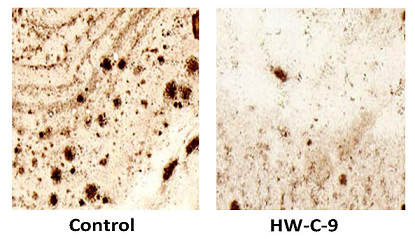Competitive Advantages
- Treats underlying cause of AD instead of just treating symptoms
- Disrupts the aggregation of AD-causing proteins
- Has the potential to prevent or reverse AD and other related neurodegenerative diseases
Summary
Alzheimer’s Disease is a complex neurodegenerative condition that afflicts 25 million people worldwide. Current drugs produce minor improvement of symptoms without preventing or reversing AD’s progression. Three proteins have been identified in the onset of similar neurodegenerative conditions: amyloid beta peptides, tau peptides, and synuclein. Their aggregation in the brain is related to the onset and persistence of AD, yet no current drugs or therapies target them. This new ligand, HW-C-9, disrupts the aggregation of amyloid beta peptides, tau peptides, and synuclein. It also removes the plaques formed by them. This promising molecule can be used for the diagnosis, prevention, and cure of AD and other related neurodegenrative diseases.

Alzheimer's Afflicted Mouse Brain Tissue: HW-C-9 Disrupts the Aggregation of AD-Causing Proteins (Dark Spots)
Desired Partnerships
- License
- Sponsored Research
- Co-Development